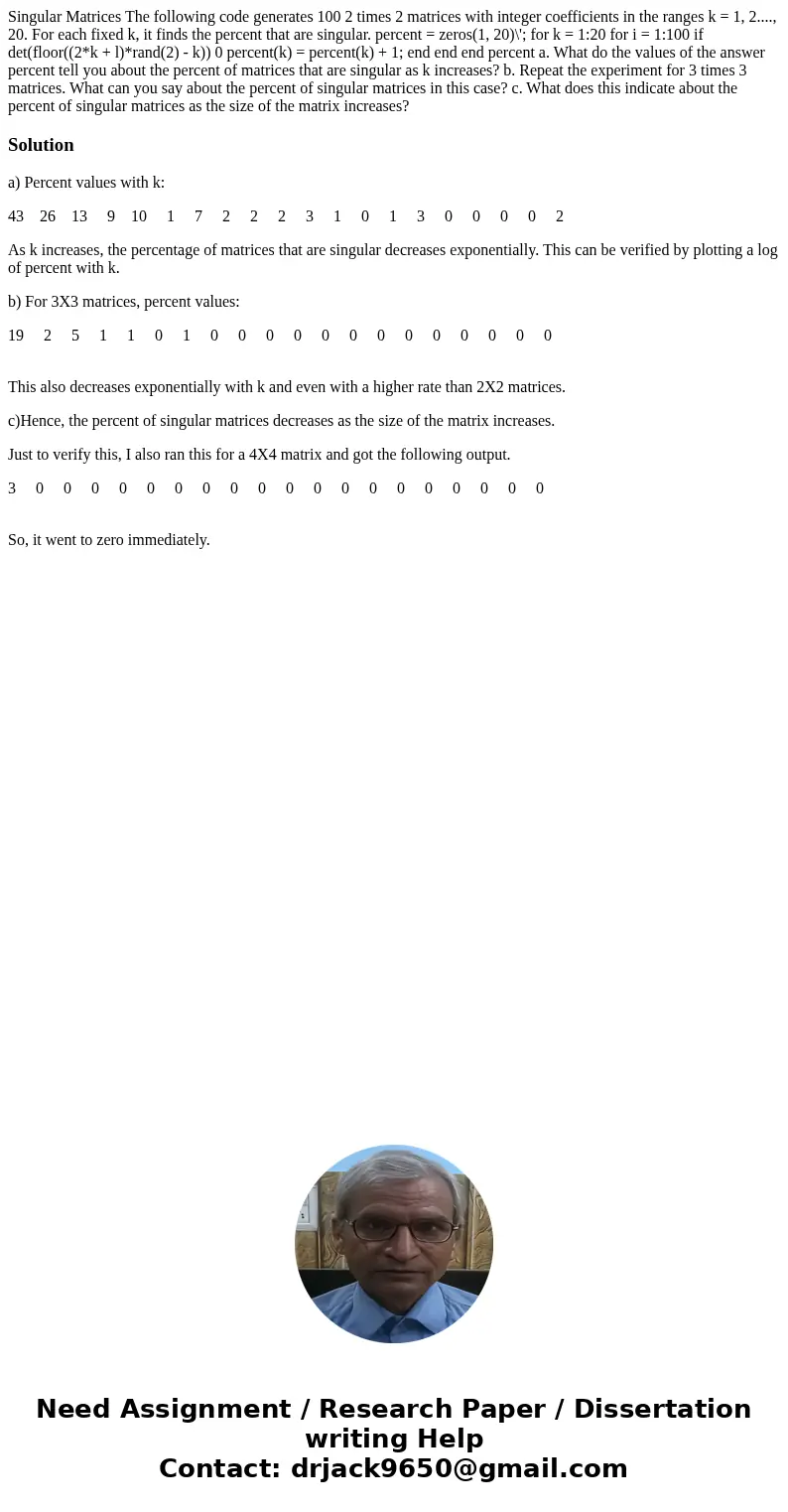Singular Matrices The following code generates 100 2 times 2
Solution
a) Percent values with k:
43 26 13 9 10 1 7 2 2 2 3 1 0 1 3 0 0 0 0 2
As k increases, the percentage of matrices that are singular decreases exponentially. This can be verified by plotting a log of percent with k.
b) For 3X3 matrices, percent values:
19 2 5 1 1 0 1 0 0 0 0 0 0 0 0 0 0 0 0 0
This also decreases exponentially with k and even with a higher rate than 2X2 matrices.
c)Hence, the percent of singular matrices decreases as the size of the matrix increases.
Just to verify this, I also ran this for a 4X4 matrix and got the following output.
3 0 0 0 0 0 0 0 0 0 0 0 0 0 0 0 0 0 0 0
So, it went to zero immediately.

 Homework Sourse
Homework Sourse